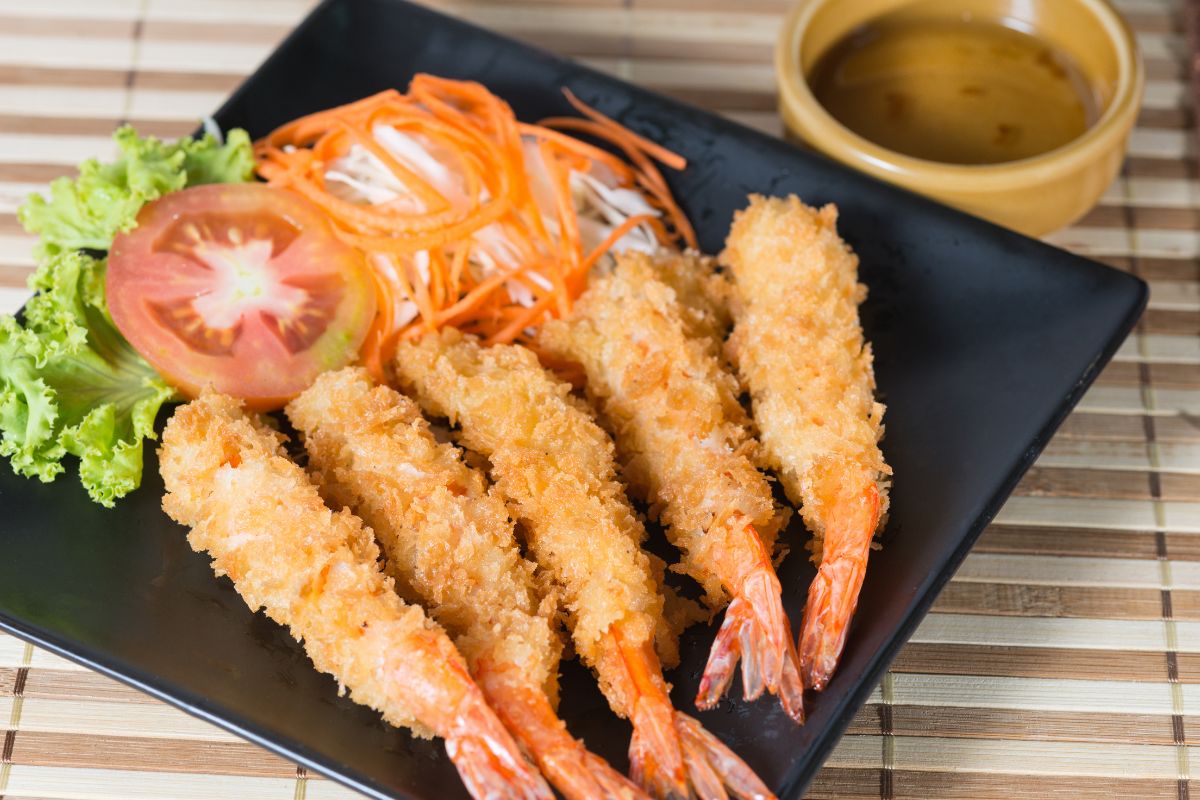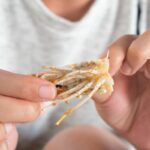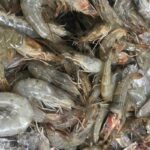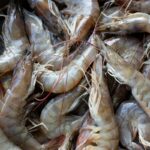Tempura can be a varied dish as it is more of a cooking method than a specific dish. It could be shrimp, meat, or vegetables that are served as individual, puffy, and deep-fried pieces.
They are delectable and carefully created for that deep-fried, crispy but really light coating. You can recreate this ancient cooking technique at home where you can choose what to coat in batter and then deep fry.

In this guide, we will ask; what is tempura? We will also look at how tempura batter is made, the different types of tempura, and how to make tempura at home.
What Is Tempura?
Though tempura may seem like a modern dish, it dates back to the 16th century. This is when it is believed that tempura was either developed by the Japanese themselves or brought over by Portuguese missionaries.
The Tokyo-style tempura that we know today has its origin with street vendors, specifically those that were placed by the fish market throughout the Edo period.
The cooking method involves food such as sushi, vegetables, or seafood which is covered in a light batter and then deep-fried for a light and crispy coating.
That will be the preparation for any food that is featured on the menu of a Japanese restaurant which says it is ‘tempura fried’. What was once a street food is now a serious and delectable cooking method that can take years to master.
How Tempura Batter Is Made
Tempura batter just has three ingredients; egg, flour, and ice water so you can try to make it at home. The type of flour to use is typically plain and all-purpose though you can try a light flour of your choice.
However, you can buy ready-made tempura mix in grocery stores and then mix it with the ice water and egg.
That’s a basic combination of ingredients yet it creates a gorgeous light, puffy coating. Probably the most important component to the batter is the ice water as it prevents the batter from becoming too dense.
That’s due to how it slows the formation of gluten and prevents a lot of oil from becoming absorbed by the batter while pieces are being deep-fried.
The Different Types Of Tempura
Pretty much any foodstuff can be deep-fried in tempura batter, including sweet and savory items. In Japanese cuisine, there are typically only certain dishes that are tempura fried and this includes sushi, vegetables, chicken, and shrimp.
Sushi Tempura
One of the most widely-found tempura dishes involves sushi. That can mean two things; either the sushi rolls are tempura-fried themselves or just some sushi ingredients are, such as shrimp, which are then placed on the sushi roll.
Vegetable Tempura
Root vegetables can be a popular choice to be deep-fried in tempura batter. You can expect to find carrots, peppers, eggplant, mushrooms, sliced onion, and shiitake mushrooms as popular tempura dishes.
Chicken Tempura
Pieces of chicken and even eggs can be tempura-fried but these can be hard to find. This is likely because the chicken pieces and eggs become heavy once deep-fried, even in tempura batter.
Shrimp Tempura
The original tempura was made with seafood and that commonly included shrimp. You can still readily find Japanese tiger prawns as a popular tempura item.
How To Make Tempura At Home
As you only need three staple ingredients to create your own tempura batter, you should be tempted to make it at home. Of course, you will also need a lot of vegetable oil and a pan or wok you trust for deep-frying.

Also, decide on what you want to tempura fry as you can choose from seafood, meat, vegetables, or even sushi. Finally, you can add a dipping sauce from equal parts light soy sauce and mirin with a pinch of dashi granules.
- Create your dipping sauce first and then whisk the ingredients together in a bowl to set aside.
- Whisk one and three-quarters of a cup of ice water with two egg yolks
- Sift in one and a half cups of all-purpose flour to whisk until just about combined. You can expect it to be a bit lumpy and not completely smooth.
- Heat a quart of vegetable oil in a wok or saucepan over a high heat until not quite smoking. It should be about 375°F which is very hot.
- Dip your sushi, seafood, meat, or vegetable pieces into the batter and ensure they are completely covered.
- Carefully drop the pieces into the hot oil and cook them in batches.
- Leave them to deep-fry for two to three minutes on each side until the batter turns a golden brown color.
- Carefully remove the batter pieces from the oil and place them on a plate lined with a paper towel to absorb the excess oil.
Final Thoughts
With a light and airy batter, tempura should be crispy and delicate. Part of its appeal is how the ingredients are so commonly found and how versatile the dish proves to be.
You could make tempura seafood, use it for sushi, or simply cover vegetables with the batter and deep fry them.
Frequently Asked Questions
As with deep-frying any type of battered pieces, you occasionally get pieces of batter that are leftover once the pieces are fully cooked.
That occurs when deep-frying fish for fish and chips and with tempura, the flakes are decidedly light. These flakes can be known as crunchies and are also used as toppings for noodles or sushi.
You can buy tempura flakes on their own if you simply want to use them for that purpose.
What differentiates fried food and tempura is the batter as both involve deep-frying. The batter used in tempura tends to be more light and airy than that used for other fried food.
That’s largely why you can find tempura in high-end Japanese restaurants. Other fried foods are cheaply made using less sought-after ingredients.
- How To Reheat A Cheesesteak - November 5, 2023
- What Are Three Must Have Kitchen Knives? - September 22, 2023
- How To Protect Edges Of Pie Crust - June 15, 2023








